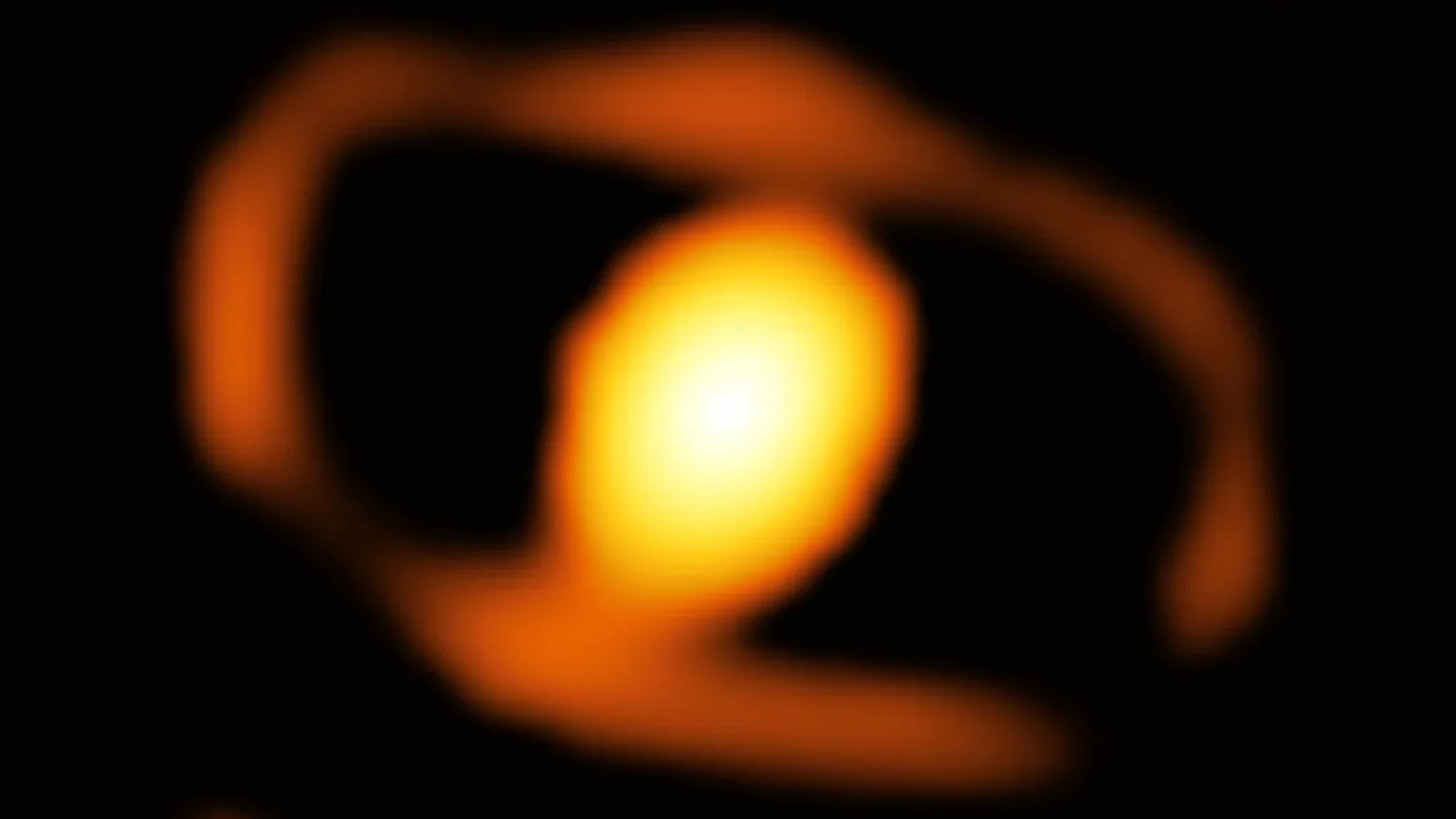In a monumental breakthrough, astronomers have captured the first close-up image of a star located outside our galaxy, offering a rare glimpse into the final moments of a celestial giant. The star, WOH G64, is a red supergiant approximately 160,000 light-years away in the Large Magellanic Cloud, a satellite galaxy of the Milky Way.
The discovery was made by researchers using the European Southern Observatory’s Very Large Telescope (VLT) in Chile, equipped with a cutting-edge instrument called GRAVITY. This tool combines the light from four telescopes, enabling unprecedented observations of distant stars.
“For the first time, we have succeeded in taking a zoomed-in image of a dying star,” said Keiichi Ohnaka, an astrophysicist at Andrés Bello National University in Chile and lead author of the study published in Astronomy and Astrophysics.
A Cosmic Giant in Its Final Act
WOH G64 is a red supergiant, the largest type of star in the universe. These stars expand dramatically as they approach the end of their lives, eventually exploding in a supernova. The image captured by the team reveals the star as a bright yellow blur encased in an egg-shaped cocoon of gas and dust.
“We discovered an egg-shaped cocoon closely surrounding the star,” Ohnaka explained. “This may be related to the drastic ejection of material from the dying star before a supernova explosion.”
This shedding process, common among red supergiants, can span thousands of years, as the star releases massive amounts of gas and dust into space.
Witnessing Stellar Evolution in Real Time
The team has been monitoring WOH G64 for years, using earlier instruments to study its characteristics. However, capturing a detailed image remained out of reach until the GRAVITY instrument came online. By comparing their latest observations with data from 2005 and 2007, the scientists discovered that the star has dimmed significantly over the past decade.
“The star has been experiencing a significant change in the last 10 years, giving us a rare opportunity to witness a star’s life in real time,” said study co-author Gerd Weigelt of the Max Planck Institute for Radio Astronomy in Germany.
Jacco van Loon of Keele University in the UK, another co-author, emphasized the significance of these changes. “Red supergiants like this one are among the most extreme stars. Any drastic change may signal that it’s approaching an explosive end.”
Mysteries of the Cosmic Cocoon
The unusual egg-shaped cocoon surrounding WOH G64 has intrigued scientists. One possibility is that it results from the expelled material released during the star’s dying stages. Another theory suggests the presence of an undiscovered companion star influencing the shape of the surrounding dust and gas.
The findings shed light on the dramatic transformations that occur as massive stars near the end of their lives, paving the way for a supernova explosion.
This extraordinary discovery not only provides a rare glimpse into the evolution of a red supergiant but also offers a deeper understanding of the life cycles of massive stars and the cosmic processes that shape our universe.




